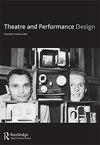Peter Weibel x ChatGPT
Q2 Arts and Humanities
引用次数: 0
Abstract
Posed with the challenge to write on influential design for this special double issue of Theatre and Performance Design entitled ‘On Capture’, I decided to fuse the launch and widespread adoption of the public-facing language-based artificial intelligence-driven chatbot named Chat Generative Pre-Trained Transformer (ChatGPT) with the passing of pre-eminent media theorist, artist, curator and AI advocate and critic Peter Weibel. As a result, this article explores Weibel’s work on capture through an interview I conducted with ChatGPT, tempered by some of the author’s observations and fact-checking. My encounters with Peter Weibel, first as a student in the mid-1980s at the University of Applied Arts in Vienna, at Ars Electronica in Linz and later as a guest artist at the Centre for Art and Media (ZKM), were brief but influential and provided a context for writing this article. Interestingly, while ChatGPT knew much about Peter Weibel, it failed to realise that he passed away on 1 March 2023 in Karlsruhe and it was inaccurate regarding what Weibel published, where, when and by whom. Having said that, ChatGPT was, at the time of writing this article, only four months old and prone to inventing things or at least mixing them up. I began by asking ChatGPT general questions about Weibel’s life and work, initially focusing on his relationship with Joseph Beuys. Peter Weibel, born in Odessa in 1944, was a pre-eminent European media theorist, curator and artist who took over the direction of the Centre for Art and Media (ZKM) in 1999 from Prof. Hans Peter Schwarz after Schwarz was appointed Rector at the University of the Arts Zurich in the same year. From 1964 to 1969, Weibel studied under and was an assistant to Joseph Beuys. Beuys’ ideas of art as a social and political change tool influenced Weibel’s future direction in examining the intersection of art, politics and technology. Whereas Beuys went on to politically underpin German art in the late twentieth century, arguably, Weibel’s most significant contribution was to construct a framework to understand and engage with the emergence of digital technologies in the late twentieth and early twenty-first centuries. Through collaboration, curation, text and artistic practice, Weibel’s work underwrites some of the most significant challenges of the twenty-first century. In the early 1970s, Weibel began experimenting with video and multimedia installations, creating works that explored the possibilities of new technologies and their relationship to human perception and consciousness, collaborating with artists such as Nam June Paik and Laurie Anderson.Peter Weibel x ChatGPT
面对为《戏剧与表演设计》特刊“on Capture”撰写有影响力的设计的挑战,我决定将面向公众的基于语言的人工智能驱动聊天机器人ChatGPT的推出和广泛采用与杰出的媒体理论家、艺术家、策展人、人工智能倡导者和评论家Peter Weibel的去世结合起来。因此,本文通过我对ChatGPT进行的一次采访,通过作者的一些观察和事实核查,探讨了Weibel在捕获方面的工作。上世纪80年代中期,我在维也纳应用艺术大学(University of Applied Arts)、林茨电子艺术学院(Ars Electronica)以及后来在艺术与媒体中心(ZKM)担任客座艺术家时,先后与彼得·维贝尔(Peter Weibel)有过短暂而有影响力的接触,并为撰写本文提供了背景。有趣的是,虽然ChatGPT对彼得·韦贝尔很了解,但却没有意识到他于2023年3月1日在卡尔斯鲁厄去世,而且关于韦贝尔发表的内容、地点、时间和作者也不准确。话虽如此,在撰写本文时,ChatGPT只有四个月的历史,而且很容易发明一些东西,或者至少把它们混在一起。我首先向ChatGPT询问了一些关于韦贝尔生活和工作的一般性问题,最初的重点是他与约瑟夫·博伊斯(Joseph Beuys)的关系。彼得·维贝尔,1944年出生于敖德萨,是欧洲杰出的媒体理论家、策展人和艺术家。1999年,汉斯·彼得·施瓦茨教授被任命为苏黎世艺术大学校长后,他接替施瓦茨教授担任艺术与媒体中心(ZKM)的主任。从1964年到1969年,韦贝尔师从约瑟夫·博伊斯,并担任他的助手。博伊斯关于艺术作为社会和政治变革工具的观点影响了韦贝尔未来研究艺术、政治和技术交集的方向。尽管博伊斯在二十世纪后期继续在政治上支持德国艺术,但可以说,韦贝尔最重要的贡献是构建了一个框架,以理解和参与二十世纪末和二十一世纪初数字技术的出现。通过合作、策展、文本和艺术实践,维贝尔的作品涵盖了21世纪一些最重大的挑战。在20世纪70年代初,韦贝尔开始尝试视频和多媒体装置,创作作品,探索新技术的可能性及其与人类感知和意识的关系,与白南准和劳里·安德森等艺术家合作。
本文章由计算机程序翻译,如有差异,请以英文原文为准。
求助全文
约1分钟内获得全文
求助全文
来源期刊

Theatre and Performance Design
Arts and Humanities-Visual Arts and Performing Arts
CiteScore
0.40
自引率
0.00%
发文量
14
 求助内容:
求助内容: 应助结果提醒方式:
应助结果提醒方式:


